POLYCHAETEN - Worm species and GLAUCIDAE AEOLIDINA
Beforehand and first:
That we at SUBIPEDIA can present two species at the same time, which are found, photographed and described here for the first time in the Red Sea, is thanks to the biologist and diver Dr. Felix Lorenz and the divers Dietmar Amon and Jana Kratzsch.
In shallow water in the sandy areas overgrown with sea grass in "our" bay in Sahl Hasheesh I have noticed "bubbles" for quite some time.
I could not find these bubbles in any book of determination and therefore could neither assign nor classify them.
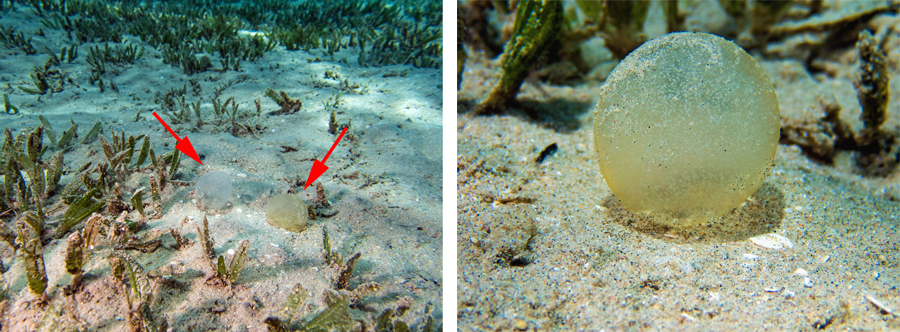
The "bubbles" are a jelly bubble spawn of a polychaet in which the eggs of a worm are located.
If you take a closer look at the "bubble" you can see very well in the picture below that it comes out of the sand and is ejected by the worm that is not visibly buried in the sand.
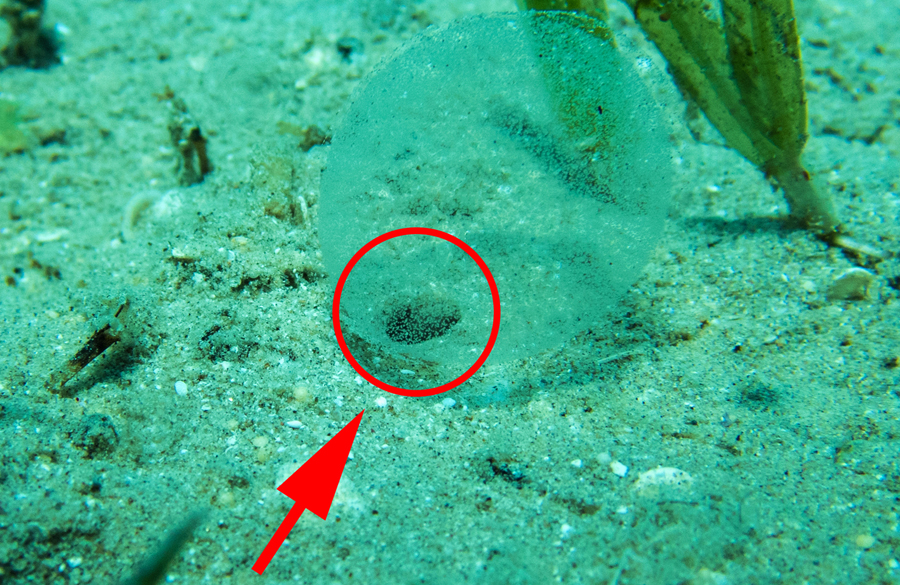
The next picture shows that it is a gelatinous one, where also the small eggs can be seen.
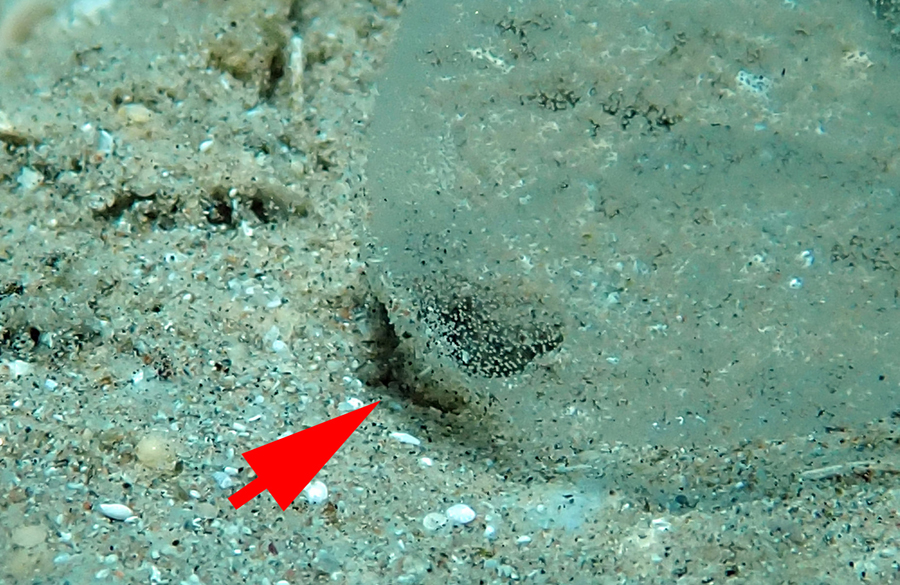
Admittedly, this is not so spectacular for the "non-biologist".
It becomes spectacular when it is shown that in some of these bubbles the nudibranch nests. This species was described for the first time during a nudibranch workshop at the diving base of Dietmar Amon in Kavieng, Papua New Guinea. It is called Flaucidae Aeolidina from the genus Favorinus.
Dietmar discovered this nudibranch species, in the "bubble" during one of his dives together with Felix and Jana, on the occasion of the Fluo-Foto-Bio Event in May, in our bay in Sahl Hasheesh.
In one clutch there were several slugs of different sizes.
On the left side of the picture a still very small one, 2 to 3mm big and a slightly bigger one of 7-8mm.
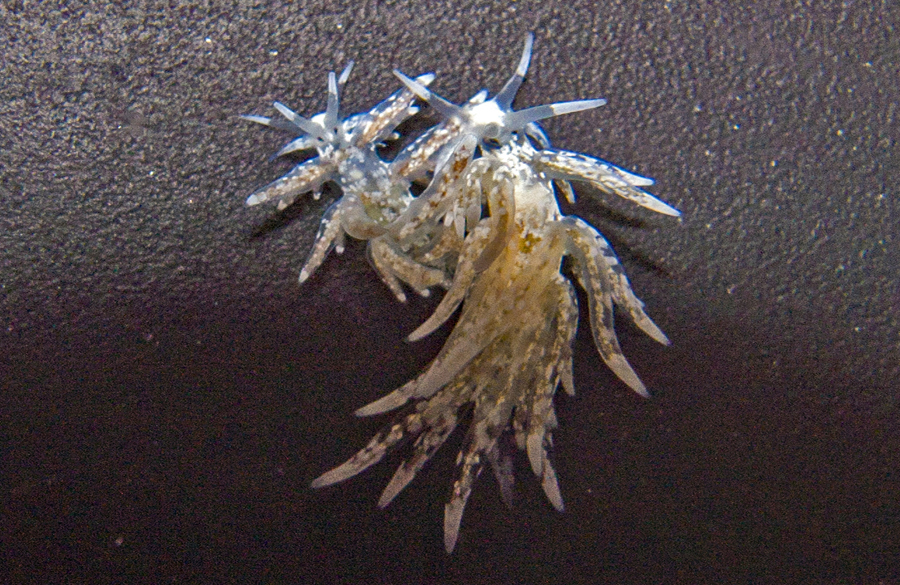
The nudibranch only grows about 10mm in size. It is a predator that does not attack the worm itself, but only eats its eggs.
In the picture on the right a full-grown specimen.
Note: The pictures were taken with the microscope setting of the Olympus Tougth 5 UW camera.
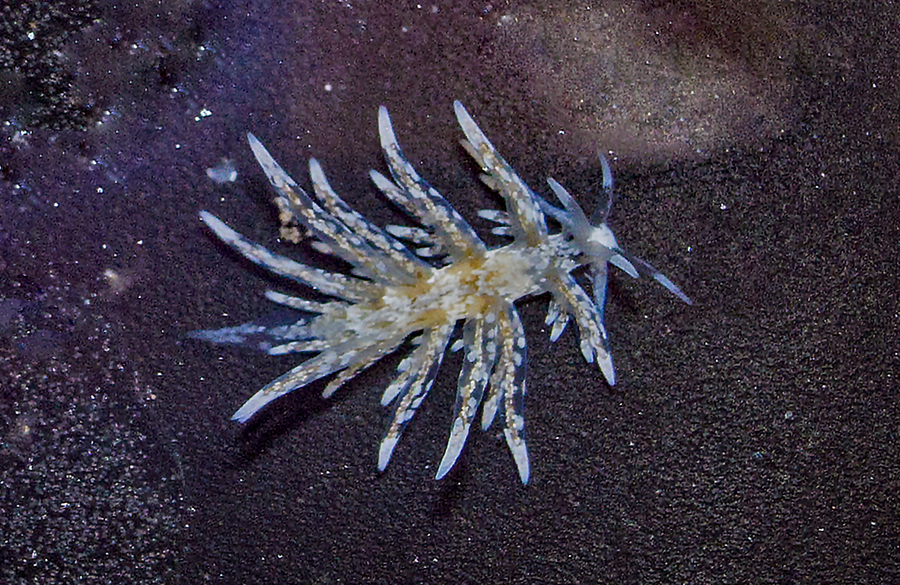
Photos: Dietmar Amon, Dr.Felix Lorenz and Jana Kratzsch
Sources: Dr. Felix Lorenz
